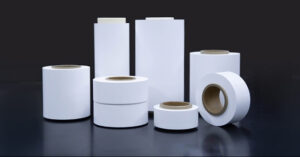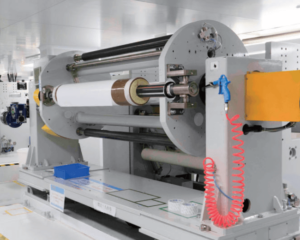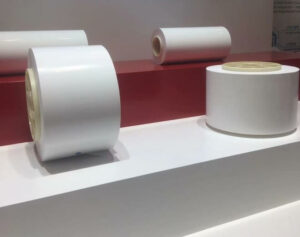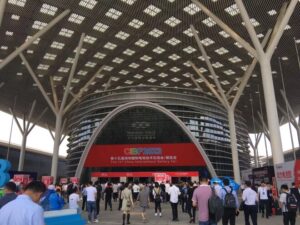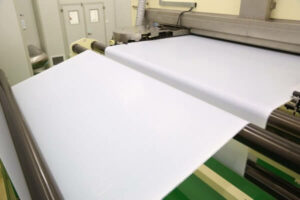Battery separators play a crucial role in the functioning and performance of rechargeable batteries. These thin yet essential components create a physical barrier between a battery’s positive and negative electrodes, preventing short circuits while allowing the flow of ions.
Battery separators come in various types and designs, offering different performance levels and customization. This article will explore the differences between customized and regular battery separators and discuss the factors to consider when choosing.
Regular Battery Separators
Regular battery separators, also known as standard separators, are widely used in various battery applications. These separators are typically manufactured in large quantities and have a standardized design and composition. They are readily available in the market and are cost-effective due to economies of scale.
Regular separators such as PE and PP separators (PE base film and PP base film) are known for their high mechanical strength and chemical stability. They offer good electrolyte absorption and ion conductivity, ensuring efficient battery performance.

Benefits of regular battery separators
Regular battery separators offer a range of benefits that make them a popular choice for many battery applications. These off-the-shelf separators are widely available, cost-effective, and provide reliable performance across various battery chemistries.
1. Versatility:
One of the primary benefits of regular battery separators is their versatility. They are designed to work with multiple battery chemistries, making them compatible with various applications. Regular separators are available in different sizes, thicknesses, and formats, allowing users to select the most suitable option.
This versatility is particularly advantageous for manufacturers who produce batteries for different applications. Instead of developing customized separators for each battery type, they can use regular separators, simplifying the manufacturing process and reducing costs.
2. Cost-Effectiveness:
Regular battery separators offer a cost-effective solution for battery manufacturers and end-users. Due to economies of scale, regular separators are produced in large quantities, resulting in lower manufacturing costs. These cost savings are often passed on to the customers, making regular separators more affordable than customized alternatives.
Additionally, regular separators are readily available in the market, ensuring a constant supply chain and reducing lead times for battery production. This availability and cost-effectiveness make regular separators an attractive option for large-scale battery manufacturers and individual consumers.
3. Established Performance:
Regular separators have a well-established track record of performance and reliability. They have been extensively used in various battery applications and have undergone rigorous testing and validation. Manufacturers have optimized regular separators for general battery chemistries, ensuring they meet the performance requirements of most applications.
Regular separators’ consistent and reliable performance instills confidence in battery manufacturers and end-users. They can rely on these separators to provide stable and predictable performance, ensuring their batteries’ desired functionality and longevity.
4. Simplified Design and Manufacturing:
Using regular battery separators simplifies the design and manufacturing processes for battery manufacturers. These separators have standardized dimensions and properties, allowing easy integration into battery assemblies. Manufacturers can follow established guidelines and specifications for incorporating regular separators into their battery designs, reducing design complexity and time-to-market.
Moreover, regular separators are compatible with standard battery manufacturing equipment and processes. Manufacturers can utilize existing production lines without significant modifications or investments, further streamlining the manufacturing process.
5. Quality Control:
Regular separators are produced by reputable manufacturers who prioritize quality control. These manufacturers have well-established processes and quality assurance measures to ensure consistent and reliable separator performance. Regular separators undergo strict testing and inspection to meet industry standards and regulations, guaranteeing their reliability and safety.
The quality control measures associated with regular separators provide peace of mind to battery manufacturers and end-users. They can trust that the separators will meet the necessary performance and safety requirements, reducing the risk of issues or failures in battery applications.
6. Regulatory Compliance:
Regular battery separators are designed and manufactured to comply with industry regulations and safety standards. Manufacturers of regular separators invest in research and development to ensure their products meet the requirements for safety, performance, and environmental sustainability.
Using regular separators can simplify the compliance process for battery manufacturers. Since these separators have already undergone the necessary testing and validation, manufacturers can leverage the compliance records of regular separators to meet the regulatory obligations for their battery products.
Regular battery separators offer several benefits, making them a preferred choice for many battery applications. Whether in consumer electronics, automotive, or industrial sectors, regular battery separators continue to be a trusted component in developing high-quality and cost-efficient batteries.
Disadvantages of Regular Battery Separators
Regular battery separators are widely used in various battery applications due to their versatility and cost-effectiveness. However, they also have some limitations and potential disadvantages that should be considered.
1. Limited Performance Optimization:
Regular battery separators are designed to be compatible with various battery chemistries and applications. They are typically designed to provide acceptable performance across various applications but may not excel in any particular aspect.
For example, regular separators may have limitations in terms of cycle life, thermal stability, or safety features when compared to customized alternatives.
2. Standardized Design and Properties:
Regular separators are typically available in limited thicknesses, pore sizes, and material compositions. This lack of customization can be a disadvantage when optimizing battery performance for specific applications or working with emerging battery technologies.
Additionally, regular separators may not provide the desired physical or mechanical properties required for specialized battery designs. For example, if a battery application requires high mechanical strength or resistance to deformation, regular separators may not be the ideal choice.
3. Performance Limitations in Extreme Conditions:
Regular separators may have limitations in extreme operating conditions. For instance, they may exhibit reduced performance at high or low temperatures. Furthermore, regular separators may not possess adequate thermal stability to withstand rapid or excessive temperature changes. This can lead to thermal runaway or thermal degradation, compromising the safety and reliability of the battery.
4. Lack of Customization for Unique Applications:
Regular battery separators are not designed to meet the specific requirements of niche or unique battery applications. Certain industries or specialized applications may demand separators with highly specific properties or features, such as enhanced flame retardancy, superior chemical resistance, or specialized geometries.
For example, electric vehicle (EV) batteries may require separators that can withstand high power and energy densities. In contrast, grid-scale energy storage systems may need separators optimized for long cycle life and high capacity. Regular separators may not offer the customization necessary to address these specific demands.
5. Standardized Safety Features:
Regular separators often come with standard safety features, but they may not provide the highest level of safety for all battery applications. With the increasing demand for high-energy-density batteries, safety concerns have become paramount. Customized separators can incorporate advanced safety features, such as ceramic coatings or additives that inhibit the formation of dendrites, thereby reducing the risk of short circuits or thermal runaway.
While generally safe, regular separators may not offer the same level of protection against internal short circuits or other safety-related issues compared to customized separators with advanced safety features.
6. Potentially Higher Failure Rates in Advanced Applications:
As battery technologies advance, regular separators may struggle to keep up with the demanding requirements of cutting-edge applications. Emerging battery chemistries and designs often have specific demands that regular separators may not meet. This can lead to increased failure rates or compromised performance in advanced applications.
For example, next-generation lithium-based batteries, such as solid-state or lithium-sulfur batteries, have unique challenges and requirements that regular separators may not be able to address effectively.
When considering regular separators, it is crucial to carefully evaluate battery applications’ specific requirements and objectives. In some cases, customized separators or specialized solutions may be necessary to overcome the limitations of regular separators and achieve optimal battery performance and safety.
Customized Battery Separators
As battery technologies continue to advance and evolve, the need for specialized battery separators has grown. Customized battery separators are designed to meet specific performance demands tailored to the requirements of a particular battery chemistry or application. They offer more customization regarding material selection, thickness, pore size distribution, and other properties.
Options of Customized battery separators
Customized battery separators offer a wide range of options for tailoring the performance and characteristics of rechargeable batteries. These specialized separators can be designed to meet the specific requirements of various battery chemistries and applications. Currently, there are different options available for customized battery separators.
- Thickness
Customized battery separators allow for precise control over the thickness of the separator. Thinner separators can enhance the battery’s energy density by reducing the distance that ions need to travel, resulting in improved power density and performance. Thicker separators, on the other hand, can provide better mechanical stability and improve the safety of the battery.
The optimal thickness of the separator depends on the specific battery chemistry and application requirements. Customized separators allow fine-tuning this parameter to achieve the desired balance between performance and safety.
- Width
Customizing the width of battery separators involves adjusting the physical dimensions of the separator material to meet specific requirements. The size and capacity of the battery can influence the choice of separator width. Larger batteries generally require wider separators to facilitate ion flow and prevent internal short circuits.
- Pore Size Distribution
The pore size distribution of a battery separator plays a crucial role in determining its ion transport properties. Customized separators can be engineered for a specific pore size distribution, optimizing ion conductivity and diffusion within the battery cell.
For example, in lithium-ion batteries, separators with smaller and more uniform pores can minimize the formation of dendrites, which are responsible for short circuits and battery failures. On the other hand, separators with larger pores can improve ion transport and promote higher power output.
By customizing the pore size distribution, it is possible to tailor the separator’s performance to the specific needs of the battery chemistry and application.
- Surface Treatment (functional coating)
The surface treatment of battery separators can also be customized to enhance their performance. Surface modifications can improve wetting properties, increase electrode adhesion, and promote better electrolyte absorption.

a. Ceramic separators
Surface coating the separator with a thin layer of ceramic (usually alumina or Boehmite) material can enhance thermal stability and mechanical strength, making them ideal for high-temperature applications. They are resistant to thermal runaway and can enhance the safety of lithium-ion batteries.
b. Polymer-Based separators
The surface of PE and PP separators is coated with a thin layer of PVDF to enhance wettability and electrolyte absorption, leading to improved ion transport and battery performance. PVDF coating can also enhance the adhesion between the separator and electrodes, ensuring better mechanical stability during battery cycling.
c. Composite Separators
Composite separators combine multiple materials to achieve a balance of properties. For instance, a composite separator can integrate a porous ceramic layer with a polymer matrix to enhance both thermal stability and ion conductivity.
These customization options allow for improved rechargeable batteries’ performance, safety, and reliability. When considering customized battery separators, it is crucial to carefully evaluate the requirements and consult with experts to ensure the best possible outcomes for your battery systems.
Benefits of customized battery separators
Customized battery separators offer numerous benefits compared to regular, off-the-shelf separators. By tailoring the separator’s properties, such as material composition, thickness, pore size distribution, and surface characteristics, customized separators can significantly enhance rechargeable batteries’ performance, efficiency, and safety.
1. Improved Battery Performance
Customized battery separators can greatly improve the overall performance of rechargeable batteries. By carefully selecting the materials and optimizing the separator’s design, it is possible to enhance several crucial parameters:
a. Energy Density:
Customized separators can be designed to have a lower thickness, reducing the distance that ions need to travel between the electrodes. This shorter path increases the battery’s energy density, allowing for higher energy storage capacity.
b. Power Density:
By fine-tuning the pore size distribution and optimizing the separator’s design, customized separators can improve the ion transport efficiency within the battery. This leads to higher power density, enabling the battery to deliver more power when needed, such as during high-current applications.
c. Cycle Life:
Customized separators can be engineered to be more resistant to degradation and aging. This improves the battery’s cycle life, allowing it to withstand more charge and discharge cycles without significant capacity loss.
d. Safety:
Customized separators can enhance the safety of rechargeable batteries by incorporating materials with improved thermal stability or adding features to inhibit the formation of dendrites, which can cause short circuits and lead to battery failure.
2. Compatibility with Specific Battery Chemistries
Different battery chemistries have unique requirements, and customized separators offer the advantage of compatibility with specific chemistries.
Customized separators can be tailored to the specific characteristics of a particular battery chemistry. For example, lithium-ion batteries may require separators with small and uniform pores to prevent the formation of dendrites. By matching the separator to the battery chemistry, it is possible to achieve improved performance and efficiency.
3. Enhanced Safety
Battery safety is a great concern, particularly for high-energy-density batteries like lithium-ion batteries. Customized separators can incorporate safety features that help mitigate risks associated with battery operation.
For example, ceramic-coated separators can enhance the thermal stability of the battery, reducing the likelihood of thermal runaway and improving overall safety. Customized separators can also be designed to have higher mechanical strength, minimizing the chances of separator deformation and internal short circuits.
Additionally, customized separators can be engineered to have improved resistance to mechanical abuse, puncture, and thermal stress, providing an extra layer of protection against external hazards.
4. Tailored for Specific Applications
Customized battery separators allow tailoring the separator’s properties to specific application requirements. For example:
a. Electric Vehicles (EVs):
EV batteries require high power and energy densities for extended range and fast charging capabilities. Customized separators can be designed to meet these demands, enhancing the performance and reliability of EV batteries.
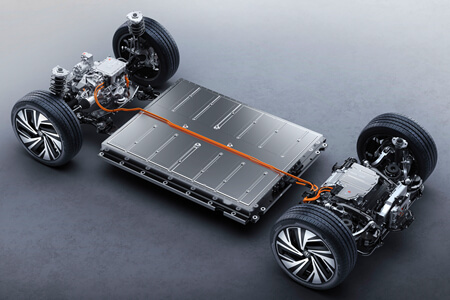
b. Portable Electronics:
Customized separators can be optimized for smaller, lightweight batteries used in smartphones, laptops, and other portable devices. Reducing the separator thickness and enhancing ion conductivity can improve the battery’s energy density without sacrificing safety.

c. Energy Storage Systems (ESS):
ESS batteries require long cycle life, high efficiency, and excellent safety. Customized separators can be tailored to meet these specific needs, ensuring reliable and efficient energy storage for residential, commercial, and grid-scale applications.

Disadvantages of Customized Battery Separators
Customized battery separators have gained attention in battery technology as they offer the potential for improved performance, safety, and lifespan. However, it is crucial to recognize the disadvantages of customized battery separators.
1. Development Complexity
Customizing battery separators introduces a higher level of complexity in the development process. Designing and developing customized separators require extensive research and development efforts.
Engineers and scientists must invest significant time and resources to identify and optimize the separators’ materials, microstructure, and properties to meet specific requirements. This complexity can lead to longer development cycles and increased costs, making it challenging for widespread adoption, especially in smaller-scale applications.
2. Cost Implications
mplementing customized battery separators often comes with cost implications. Customization involves additional steps in the manufacturing process, such as material selection, formulation, and processing techniques. These steps can increase the overall production costs of batteries.
Moreover, the demand for customized separators may not be as high as for standardized separators, which can lead to higher material costs due to limited economies of scale. The increased costs associated with customized separators can impact the affordability and market competitiveness of battery-powered devices or systems.
3. Manufacturing Challenges:
Manufacturing customized battery separators can pose significant challenges. The production processes must be tailored to the specific separator design and material composition, which may require specialized equipment and techniques. Implementing these customized manufacturing processes can be time-consuming and costly.
Additionally, maintaining consistent quality control and ensuring reproducibility across large-scale production can be more difficult with customized separators than with standardized ones. These manufacturing challenges can limit customized battery separators’ scalability and commercial viability.
4. Compatibility Issues:
Customized battery separators may face compatibility issues when integrated into existing battery systems. Battery manufacturers typically design their systems based on standardized separators with well-defined characteristics and specifications. Introducing customized separators may disrupt the delicate balance within the battery system, affecting performance, safety, or lifespan.
Compatibility issues can arise in terms of mechanical fit, thermal behavior, or chemical interaction between the customized separator and other components of the battery. Addressing these compatibility issues requires careful system-level integration and validation, which can be time-consuming and costly.
5. Limited Standardization
Customized battery separators lack the advantage of standardized specifications and compatibility. Standardization enables interoperability, interchangeability, and widespread adoption of battery components across different manufacturers and applications.
However, customized separators may have unique characteristics tailored to specific battery chemistries, form factors, or performance requirements. This lack of standardization makes it more challenging to source, compare, and evaluate customized separators from different suppliers.
Furthermore, limited standardization can hamper the recycling and reusability of customized separators, complicating the management of end-of-life battery waste.
6. Longer Time-to-Market
Developing and implementing customized battery separators can result in longer time-to-market than standardized separators.
Customization involves extensive research, prototyping, testing, and optimization stages. These processes require iterative cycles to fine-tune the separator design and properties.
The longer development cycles can delay the commercialization of battery technologies incorporating customized separators, affecting innovative battery systems’ competitiveness and timely adoption.
Customized or Regular Battery Separators: Making the Right Choice
When choosing between customized and regular battery separators, several factors should be taken into consideration:
1. Battery Chemistry
Different battery chemistries have unique requirements. Customized separators can be tailored to the specific chemistry, ensuring compatibility and optimal performance. On the other hand, regular separators offer a generic solution suitable for a wide range of applications.
2. Performance Requirements
Consider the specific performance requirements of your battery application. If you need to maximize energy density, increase power output, or improve cycle life, customized separators can be designed to address these needs. Regular separators may not provide the desired level of performance optimization.
3. Cost
Customized battery separators are often more expensive than regular separators due to the additional development and customization processes. Evaluate whether the performance benefits outweigh the increased cost, especially during the design and development process of cells. Customizing a small quantity of battery separators is both time-consuming and costly, and most manufacturers do not want to spend effort on customizing battery separators in small quantities.
4. Manufacturing Scale
Customized separators are typically manufactured in smaller quantities, making them suitable for niche or specialized applications. If you require large-scale production, regular separators offer a cost-effective solution.
Conclusion
Battery separators are critical components in rechargeable batteries, and the choice between customized and regular separators depends on various factors. Regular separators provide a cost-effective and readily available solution for general battery applications.
However, customized separators offer a tailored solution if you require enhanced performance, compatibility with specific battery chemistries, or customization to meet unique requirements. When deciding between the two, consider the battery chemistry, performance requirements, cost, and manufacturing scale. With the right choice of battery separators, you can optimize your rechargeable batteries’ performance, reliability, and longevity.


